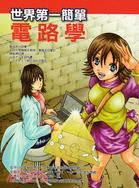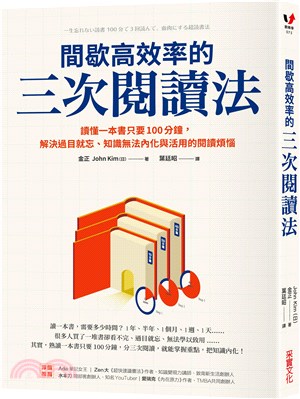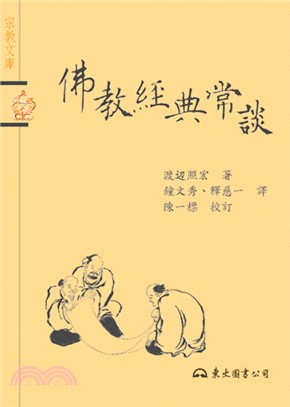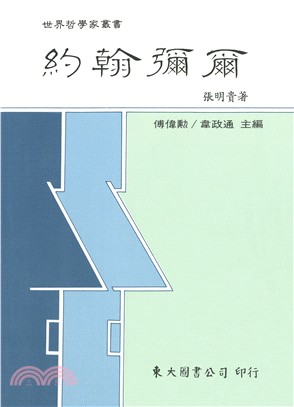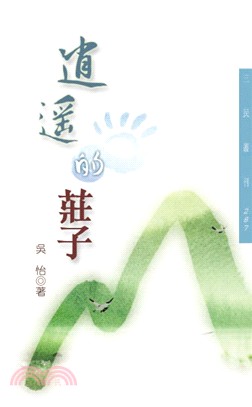MICRO INSTRUMENTATION - FOR HIGH THROUGHPUT EXPERIMENTATION AND PROCESS INTENSIFICATION
- ISBN13:9783527314256
- 出版社:JOHN WILEY & SONS;LTD
- 作者:KOCH
- 裝訂/頁數:精裝/520頁
- 出版日:2007/02/23
定 價:NT$ 8575 元
優惠價:90 折 7718 元
若需訂購本書,請電洽客服 02-25006600[分機130、131]。
相關商品
商品簡介
作者簡介
目次
商品簡介
This first comprehensive treatment of the intertwined roles of micro-instrumentation, high throughput experimentation and process intensification as valuable tools for process analytical technology covers both industrial as well as academic aspects. First class editors and authors from top companies and universities provide interdisciplinary coverage ranging from chemistry and analytics to process design and engineering, supported throughout by case studies and ample analytical data.
作者簡介
Dr. Melvin V. Koch is director of the Center for Process Analytical Chemistry (CPAC) and Affiliate Professor of Chemical Engineering, at the University of Washington in Seattle. He previously worked for the Dow Chemical Company in process research and analytical chemistry, achieving the level of Global Director of Analytical Sciences. Dr. Koch is active in coordinating developments in the field of process analytical technology between industry, government laboratories, and academia. He is serving on the US FDA Advisory Committee for Pharmaceutical Sciences and on review committees at several US National Laboratories.
Dr Kurt M. VandenBussche currently manages the technical resources of UOP's Innovation Group. He holds a Masters and Ph.D. degree in Chemical Engineering from the University of Ghent, Belgium. In 1994, he joined Shell Research and Development in Amsterdam, the Netherlands, as a hydrocracking process specialist. Since joining UOP LLC in December 1996, he has played a number of roles as a reaction engineering and process design consultant and later as technical manager. In 2002, he became a founding member of UOP's Innovation Group. Dr. VandenBussche is member of the executive board of ISCRE Inc and the author of a large number of scientific papers. He is a co-inventor on 15 patents and received the International DSM award for Science and Technology for his contributions in the development of forced unsteady state operation of chemical reactors.
Dr. Ray W. Chrisman is president of Atodyne Technologies and a Visiting Scholar at CPAC. He previously worked for the Dow Chemical Company in various technical and administrative roles in corporate R&D and analytical chemistry. This work involved new technology development and the introduction and use of high throughput technology including the development of patented micro-reactor systems for process characterization. He received a Ph.D. from Purdue University and has published 13 papers and a book chapter in the "Treatise on Analytical Chemistry". He is also the co-inventor on 7 patents.
Dr Kurt M. VandenBussche currently manages the technical resources of UOP's Innovation Group. He holds a Masters and Ph.D. degree in Chemical Engineering from the University of Ghent, Belgium. In 1994, he joined Shell Research and Development in Amsterdam, the Netherlands, as a hydrocracking process specialist. Since joining UOP LLC in December 1996, he has played a number of roles as a reaction engineering and process design consultant and later as technical manager. In 2002, he became a founding member of UOP's Innovation Group. Dr. VandenBussche is member of the executive board of ISCRE Inc and the author of a large number of scientific papers. He is a co-inventor on 15 patents and received the International DSM award for Science and Technology for his contributions in the development of forced unsteady state operation of chemical reactors.
Dr. Ray W. Chrisman is president of Atodyne Technologies and a Visiting Scholar at CPAC. He previously worked for the Dow Chemical Company in various technical and administrative roles in corporate R&D and analytical chemistry. This work involved new technology development and the introduction and use of high throughput technology including the development of patented micro-reactor systems for process characterization. He received a Ph.D. from Purdue University and has published 13 papers and a book chapter in the "Treatise on Analytical Chemistry". He is also the co-inventor on 7 patents.
目次
Preface.
List of Contributors.
Part I Introducing the Concepts.
1 Introduction (Melvin V. Koch).
1.1 Background.
1.2 Analytical Tools for use in PAT.
1.3 The Center for Process Analytical Chemistry (CPAC) and the Summer Institute.
1.4 Topics covered by Previous CPAC Summer Institutes.
1.5 Recent Emphasis of CPAC Summer Institutes: High Throughput Experimentation and Process Intensification.
1.6 Conclusion.
2 Macro to Micro … The Evolution of Process Analytical Systems (Wayne W. Blaser and Ray W. Chrisman).
2.1 Introduction.
2.2 Chromatography.
3 Process Intensification (Kurt M. VandenBussche).
3.1 Introduction, Scope and Definitions.
3.2 Process Intensification in the Field of Reaction Engineering.
3.3 Process Intensification through Micro-structured Unit Operations.
3.4 Case Studies.
3.5 Conclusions.
4 High Throughput Research (Ray W. Chrisman).
4.1 Introduction.
4.2 Description of Terms.
4.3 Concept of a Research Process.
4.4 High Throughput Analytical.
4.5 Extracting Information from the Process.
4.6 Process Development becomes the Next Bottleneck.
4.7 Use of High Throughput Concepts for Process Development.
4.8 Microreactors for Process Development.
4.9 Current Barriers and Limitations to Microscale Reaction Characterization.
4.10 Conclusion.
Part II Technology Developments and Case Studies.
5 Introduction (Melvin V. Koch, Ray W. Chrisman, and Kurt M. VandenBussche).
6 Microreactor Concepts and Processing (Volker Hessel, Patrick Löb, Holger Löwe, and Gunther Kolb).
6.1 Introduction.
6.2 Microreactor Technology – Interfacing and Discipline Cross-boundary Research.
6.3 Microstructured Mixer-reactors for Pilot and Production Range and Scale-out Issues.
6.4 Fine-chemical Microreactor Plants.
6.5 Industrial Microreactor Process Development for Fine and Functional Chemistry.
6.6 Industrial Production in Fine Chemistry.
6.7 Microreactor Laboratory-scale Process Developments for Future Industrial Use.
6.8 Free-radical Polymerizations (Uni Strasbourg, IMM).
6.9 Future Directions – Establishing a Novel Chemistry by Enabling Function.
6.10 Summary.
7 Non-reactor Micro-component Development (Daniel R. Palo, Victoria S. Stenkamp, Jamie D. Holladay, Paul H. Humble, Robert A. Dagle, and Kriston P. Brooks).
7.1 Overview.
7.2 Introduction.
7.3 Heat Exchange.
7.4 Mixing.
7.5 Microchannel Emulsification.
7.6 Phase Separation.
7.7 Phase Transfer Processes.
7.8 Biological Processes.
7.9 Body Force Driven Processes.
7.10 Summary and Future Directions.
8 Microcomponent Flow Characterization (Bruce A. Finlayson, Pawel W. Drapala, Matt Gebhardt, Michael D. Harrison, Bryan Johnson, Marlina Lukman, Suwimol Kunaridtipol, Trevor Plaisted, Zachary Tyree, Jeremy VanBuren, and Albert Witarsa).
8.1 Introduction.
8.2 Pressure Drop.
8.3 Dimensionless Mechanical Energy Balance.
8.4 Entry Lengths.
8.5 Diffusion.
8.6 Conclusion.
Nomenclature.
9 Selected Developments in Micro-analytical Technology.
9.1 Introduction (Melvin V. Koch).
9.2 Application of On-line Raman Spectroscopy to Characterize and Optimize a Continuous Microreactor (Brian Marquardt).
9.3 Developments in Ultra Micro Gas Analyzers (Ulrich Bonne, Clark T. Nguyen, and Dennis E. Polla).
9.4 Nuclear Magnetic Resonance Spectroscopy (Michael McCarthy).
9.5 Surface Plasmon Resonance (SPR) Sensors (Clement E. Furlong, Timothy Chinowsky, and Scott Soelberg).
9.6 Dielectric Spectroscopy: Choosing the Right Approach (Alexander Mamishev).
9.7 The Future of Liquid-phase Microseparation Devices in Process Analytical Technology (Scott E. Gilbert).
9.8 Grating Light Re. ection Spectroscopy: A Tool for Monitoring the Properties of Heterogeneous Matrices (Lloyd W. Burgess).
10 New Platform for Sampling and Sensor Initiative (NeSSI) (David J. Veltkamp).
10.1 Introduction.
10.2 What is NeSSI?
10.3 NeSSI Background.
10.4 NeSSI Physical Layer (Generation I NeSSI).
10.5 NeSSI Electrical Layer (Generation II NeSSI).
10.6 Advantages of NeSSI in Laboratory Applications.
10.7 Conclusions.
11 Catalyst Characterization for Gas Phase Processes (Michelle J. Cohn and Douglas B. Galloway).
11.1 Introduction.
11.2 Characterizing Reactivity, Reaction Mechanisms, and Diffusion.
11.3 Summary.
12 Integrated Microreactor System for Gas Phase Reactions (David J. Quiram, Klavs F. Jensen, Martin A. Schmidt, Patrick L. Mills, James F. Ryley, Mark D. Wetzel, and Daniel J. Kraus).
12.1 Overview.
12.2 Introduction.
12.3 Microreactor Packaging.
12.4 Microreactor System Design.
12.5 System Control and Process Monitoring.
12.6 Microreactor Process Safety.
12.7 Microreactor Experimental Methods.
12.8 AIMS Testing Results and Discussion.
12.9 Summary and Conclusions.
13 Liquid Phase Process Characterization (Daniel A. Hickman and Daniel D. Sobeck).
13.1 Overview.
13.2 Background.
13.3 System Design Basis.
13.4 System Capabilities.
13.4.1 System Overview.
13.4.1.1 Feed System.
13.5 Conclusions.
Nomenclature.
References.
14 Novel Systems for New Chemistry Exploration (Paul Watts).
14.1 Introduction.
14.2 Chemical Synthesis in Microreactors.
14.2.1 Synthesis of Pyrazoles.
14.2.2 Peptide Synthesis.
14.2.3 Reaction Optimization.
14.2.4 Stereochemistry.
14.3 Chemical Synthesis in Flow Reactors.
14.3.1 Large-scale Manufacture.
14.4 Conclusions.
References.
15 Going from Laboratory to Pilot Plant to Production using Microreactors (Michael Grund, Michael Häberl, Dirk Schmalz, and Hanns Wurziger).
15.1 Introduction.
15.2 Nitration.
15.3 Microreaction System “MICROTAUROS.”
15.4 Automated Reaction Optimization.
15.5 Upscale in Larger Laboratory Scale.
15.6 Upscale in a Pilot Plant.
15.7 A Concept for the Future.
15.8 Conclusion.
References.
Part III A Summary and Path Forward.
16 Concluding Remarks (Melvin V. Koch, Ray W. Chrisman, and Kurt M. VandenBussche).
16.1 Summary.
16.2 The Path Forward.
Subject Index.
List of Contributors.
Part I Introducing the Concepts.
1 Introduction (Melvin V. Koch).
1.1 Background.
1.2 Analytical Tools for use in PAT.
1.3 The Center for Process Analytical Chemistry (CPAC) and the Summer Institute.
1.4 Topics covered by Previous CPAC Summer Institutes.
1.5 Recent Emphasis of CPAC Summer Institutes: High Throughput Experimentation and Process Intensification.
1.6 Conclusion.
2 Macro to Micro … The Evolution of Process Analytical Systems (Wayne W. Blaser and Ray W. Chrisman).
2.1 Introduction.
2.2 Chromatography.
3 Process Intensification (Kurt M. VandenBussche).
3.1 Introduction, Scope and Definitions.
3.2 Process Intensification in the Field of Reaction Engineering.
3.3 Process Intensification through Micro-structured Unit Operations.
3.4 Case Studies.
3.5 Conclusions.
4 High Throughput Research (Ray W. Chrisman).
4.1 Introduction.
4.2 Description of Terms.
4.3 Concept of a Research Process.
4.4 High Throughput Analytical.
4.5 Extracting Information from the Process.
4.6 Process Development becomes the Next Bottleneck.
4.7 Use of High Throughput Concepts for Process Development.
4.8 Microreactors for Process Development.
4.9 Current Barriers and Limitations to Microscale Reaction Characterization.
4.10 Conclusion.
Part II Technology Developments and Case Studies.
5 Introduction (Melvin V. Koch, Ray W. Chrisman, and Kurt M. VandenBussche).
6 Microreactor Concepts and Processing (Volker Hessel, Patrick Löb, Holger Löwe, and Gunther Kolb).
6.1 Introduction.
6.2 Microreactor Technology – Interfacing and Discipline Cross-boundary Research.
6.3 Microstructured Mixer-reactors for Pilot and Production Range and Scale-out Issues.
6.4 Fine-chemical Microreactor Plants.
6.5 Industrial Microreactor Process Development for Fine and Functional Chemistry.
6.6 Industrial Production in Fine Chemistry.
6.7 Microreactor Laboratory-scale Process Developments for Future Industrial Use.
6.8 Free-radical Polymerizations (Uni Strasbourg, IMM).
6.9 Future Directions – Establishing a Novel Chemistry by Enabling Function.
6.10 Summary.
7 Non-reactor Micro-component Development (Daniel R. Palo, Victoria S. Stenkamp, Jamie D. Holladay, Paul H. Humble, Robert A. Dagle, and Kriston P. Brooks).
7.1 Overview.
7.2 Introduction.
7.3 Heat Exchange.
7.4 Mixing.
7.5 Microchannel Emulsification.
7.6 Phase Separation.
7.7 Phase Transfer Processes.
7.8 Biological Processes.
7.9 Body Force Driven Processes.
7.10 Summary and Future Directions.
8 Microcomponent Flow Characterization (Bruce A. Finlayson, Pawel W. Drapala, Matt Gebhardt, Michael D. Harrison, Bryan Johnson, Marlina Lukman, Suwimol Kunaridtipol, Trevor Plaisted, Zachary Tyree, Jeremy VanBuren, and Albert Witarsa).
8.1 Introduction.
8.2 Pressure Drop.
8.3 Dimensionless Mechanical Energy Balance.
8.4 Entry Lengths.
8.5 Diffusion.
8.6 Conclusion.
Nomenclature.
9 Selected Developments in Micro-analytical Technology.
9.1 Introduction (Melvin V. Koch).
9.2 Application of On-line Raman Spectroscopy to Characterize and Optimize a Continuous Microreactor (Brian Marquardt).
9.3 Developments in Ultra Micro Gas Analyzers (Ulrich Bonne, Clark T. Nguyen, and Dennis E. Polla).
9.4 Nuclear Magnetic Resonance Spectroscopy (Michael McCarthy).
9.5 Surface Plasmon Resonance (SPR) Sensors (Clement E. Furlong, Timothy Chinowsky, and Scott Soelberg).
9.6 Dielectric Spectroscopy: Choosing the Right Approach (Alexander Mamishev).
9.7 The Future of Liquid-phase Microseparation Devices in Process Analytical Technology (Scott E. Gilbert).
9.8 Grating Light Re. ection Spectroscopy: A Tool for Monitoring the Properties of Heterogeneous Matrices (Lloyd W. Burgess).
10 New Platform for Sampling and Sensor Initiative (NeSSI) (David J. Veltkamp).
10.1 Introduction.
10.2 What is NeSSI?
10.3 NeSSI Background.
10.4 NeSSI Physical Layer (Generation I NeSSI).
10.5 NeSSI Electrical Layer (Generation II NeSSI).
10.6 Advantages of NeSSI in Laboratory Applications.
10.7 Conclusions.
11 Catalyst Characterization for Gas Phase Processes (Michelle J. Cohn and Douglas B. Galloway).
11.1 Introduction.
11.2 Characterizing Reactivity, Reaction Mechanisms, and Diffusion.
11.3 Summary.
12 Integrated Microreactor System for Gas Phase Reactions (David J. Quiram, Klavs F. Jensen, Martin A. Schmidt, Patrick L. Mills, James F. Ryley, Mark D. Wetzel, and Daniel J. Kraus).
12.1 Overview.
12.2 Introduction.
12.3 Microreactor Packaging.
12.4 Microreactor System Design.
12.5 System Control and Process Monitoring.
12.6 Microreactor Process Safety.
12.7 Microreactor Experimental Methods.
12.8 AIMS Testing Results and Discussion.
12.9 Summary and Conclusions.
13 Liquid Phase Process Characterization (Daniel A. Hickman and Daniel D. Sobeck).
13.1 Overview.
13.2 Background.
13.3 System Design Basis.
13.4 System Capabilities.
13.4.1 System Overview.
13.4.1.1 Feed System.
13.5 Conclusions.
Nomenclature.
References.
14 Novel Systems for New Chemistry Exploration (Paul Watts).
14.1 Introduction.
14.2 Chemical Synthesis in Microreactors.
14.2.1 Synthesis of Pyrazoles.
14.2.2 Peptide Synthesis.
14.2.3 Reaction Optimization.
14.2.4 Stereochemistry.
14.3 Chemical Synthesis in Flow Reactors.
14.3.1 Large-scale Manufacture.
14.4 Conclusions.
References.
15 Going from Laboratory to Pilot Plant to Production using Microreactors (Michael Grund, Michael Häberl, Dirk Schmalz, and Hanns Wurziger).
15.1 Introduction.
15.2 Nitration.
15.3 Microreaction System “MICROTAUROS.”
15.4 Automated Reaction Optimization.
15.5 Upscale in Larger Laboratory Scale.
15.6 Upscale in a Pilot Plant.
15.7 A Concept for the Future.
15.8 Conclusion.
References.
Part III A Summary and Path Forward.
16 Concluding Remarks (Melvin V. Koch, Ray W. Chrisman, and Kurt M. VandenBussche).
16.1 Summary.
16.2 The Path Forward.
Subject Index.
主題書展
更多主題書展
更多書展本週66折
您曾經瀏覽過的商品
購物須知
外文書商品之書封,為出版社提供之樣本。實際出貨商品,以出版社所提供之現有版本為主。部份書籍,因出版社供應狀況特殊,匯率將依實際狀況做調整。
無庫存之商品,在您完成訂單程序之後,將以空運的方式為你下單調貨。為了縮短等待的時間,建議您將外文書與其他商品分開下單,以獲得最快的取貨速度,平均調貨時間為1~2個月。
為了保護您的權益,「三民網路書店」提供會員七日商品鑑賞期(收到商品為起始日)。
若要辦理退貨,請在商品鑑賞期內寄回,且商品必須是全新狀態與完整包裝(商品、附件、發票、隨貨贈品等)否則恕不接受退貨。















